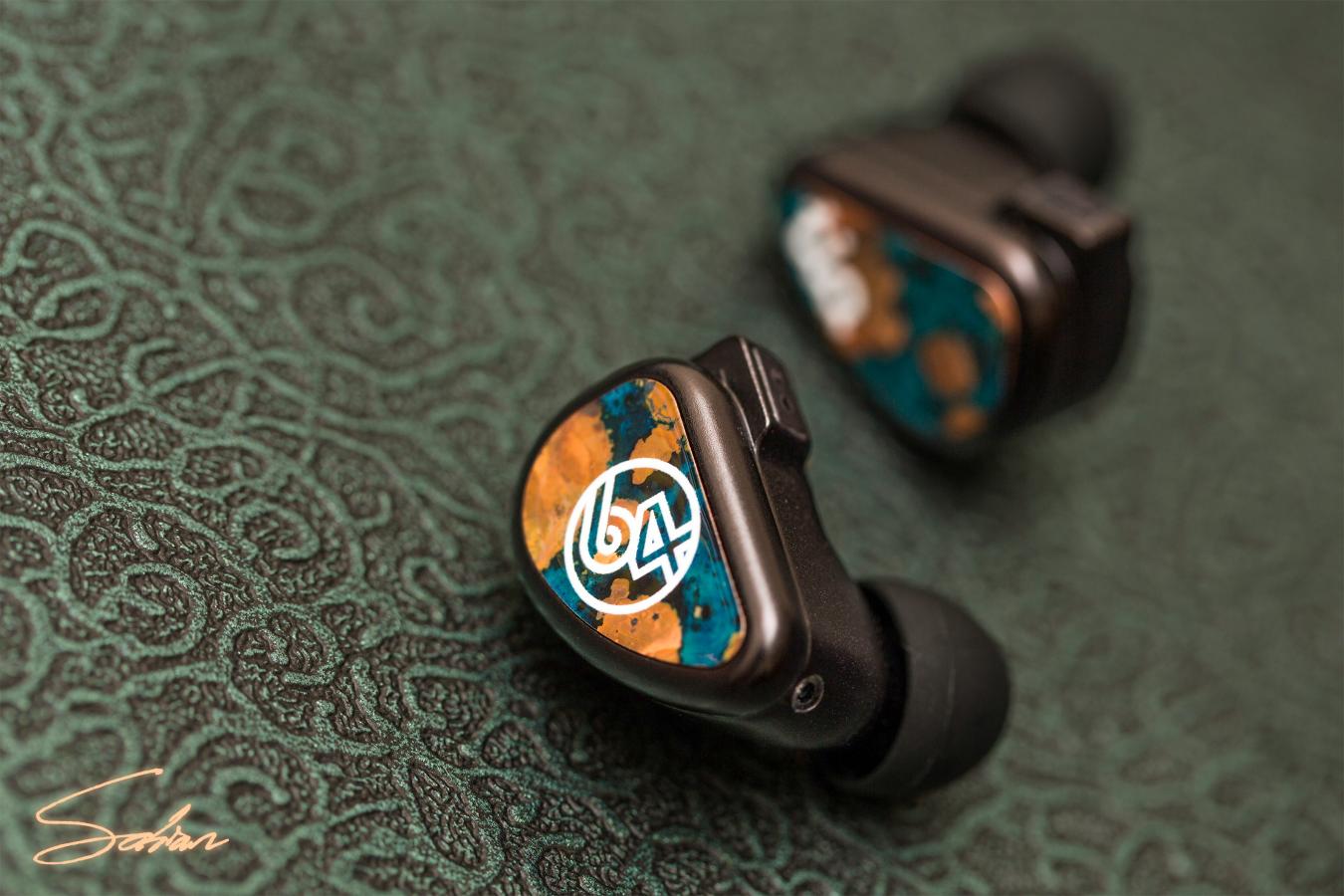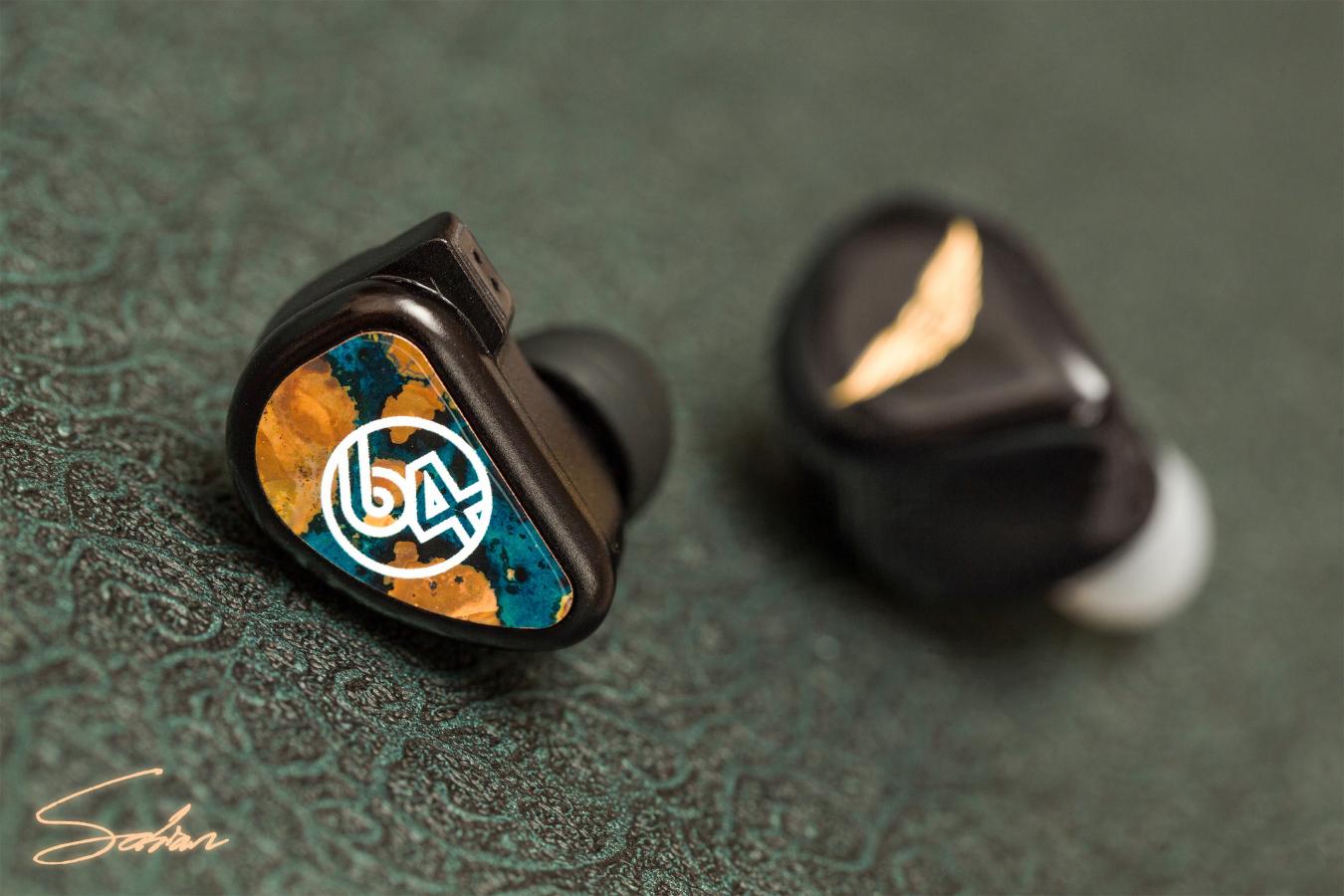DISCLAIMER: 64 Audio provided me with the tia Fourté Noir in return for my honest opinion. I am not personally affiliated with the company in any way, nor do I receive any monetary rewards for a positive evaluation. I’d like to thank 64 Audio for their kindness and support. The review is as follows.
64 Audio is a bonafide industry juggernaut; a brand renowned by artists and enthusiasts across the globe for marvellous performance and constant innovation. Their apex pressure-relief system and open-faced tia drivers are key contributors to their successes, and this was realised to the fullest in their groundbreaking flagship piece; the tia Fourté: A four-driver, fully-tubeless monitor revered for its vastness, air and resolution. This year, on the company’s 9th anniversary, 64 Audio have decided to revisit their top-of-the-line with a renewed sonic philosophy. Enter: The Fourté Noir – a limited edition variant armed with richer lows, smoother highs, and a more life-like listening experience; 64 Audio’s new gold standard.

64 Audio tia Fourté Noir
- Driver count: Three balanced-armature drivers and one dynamic driver
- Impedance: 10Ω @ 1kHz
Sensitivity: 114dB @ 1kHz @ 1mW - Key feature(s) (if any): apex pressure-relief system, tia drivers, a fully-tubeless design
- Available form factor(s): Universal aluminium IEMs
- Price: $3799
- Website: www.64audio.com
Sound Impressions
The following was written with the included silicone tips in Medium, with less than 50 hours of run-in by my estimations. The full review will cover tip pairings more closely, and at a much higher play time too.
64 Audio’s Fourté Noir delivers a musical play on neutral – engaging the listener with an immersive, spacious and robust soundscape, whilst maintaining a sense of balance at the same time. As the original did, the Noir soars when it comes to clarity and air. There’s an openness to its voicing that comes across impressively pristine. At the same time, it’s executed with greater sophistication. Width is marvellous on the Noir, but instruments maintain a degree of intimacy to not sound detached or distant. And, the retuned DD brings a welcome touch of wetness too; organic and wholesome. So, while the Noir isn’t quite as surgical as the original, its technique remains top-flight, now paired with a more natural, life-like tone.

The Noir’s low-end is lightly sub-bass-biased before settling into linearity throughout the mid- and upper-bass. This gives a relatively quick, clean attack, as well as the ability to resolve the textures and nuances within. Nevertheless, the rise up until 100Hz gives those lows a healthy amount of heft, so kick drums have a weighted presence to them. In addition, the sub-bass lift and dynamic low-end is palpably physical-sounding. Timbre-wise, the Noir favours electronic bass lines over acoustic ones. Tori Kelly’s Nobody Love sounds properly subterranean. Conversely, the double bass on Sarah McKenzie’s That’s It, I Quit is a tad more modest in projection and bloom; relying on extension to bring those woody notes through.
The Noir’s mids sound robust and open – relying on a 1-2kHz rise and tia‘s pristine voice, respectively. Lead instruments never lack clarity and presence, projecting vibrantly without sounding honky. The upper-mids especially excel in dynamic range. When electric guitars roar or songstresses belt, the Noir translates that drama effectively. Layering and detail are absolutely top-class, partly due to the Noir’s 500-1kHz dip. It’s a colouration with the by-product of pulling back the lower harmonics. So, baritones may miss some gravitas, and falsetto vocals may at times sound a tad throaty; hoarse. But, it’s a deliberate choice to achieve the clarity 64 Audio are after, executed well enough to appeal to a fair number of genres.

Up top lies the Noir’s tia-powered top-end: Crisp, articulate and endlessly airy. Details come through effortlessly against a rock-solid backdrop, enriching the image with heaps of fast, well-separated and precisely-imaged nuances. Thankfully, the region has been tempered cleverly as well, allowing the Noir to remain smooth and roomy despite the crisp timbre. It’s also distanced just enough to avoid sounding brash or thin. Transients are well-integrated with the harmonics below – with a touch of wetness – for respectable coherence. Now, these aren’t highs for those looking for the silkiest, warmest ever made. The Noir is more neutral than that. Nevertheless, it’s a treble that’ll please most, with top technique to boot.
Initial Comparisons
Empire Ears Wraith
The Wraith is a denser, more concentrated-sounding monitor. Although it’s not wetter or warmer per se, its instruments are thicker and weightier than the Noir’s because of a fuller 1-2kHz range. The Wraith’s mids have greater integrity, while the Noir takes the cake in sheer definition, clarity and separation. This is also due to the Noir’s sharper upper-treble. The Wraith is more refined and feathered-sounding by comparison. Again, this gives the Noir a sharper, slightly brighter and more dynamic attack, while the Wraith’s restraint gives it greater coherence; togetherness. The Noir then also sounds airier and cleaner with a more defined background, but the Wraith keeps up in expansion and resolution very capably.

Vision Ears Elysium
The Elysium isn’t far off from the Noir in terms of tone. Both straddle neutral with a vibrant, energetic attack. However, in terms of timbre, the Elysium is much wetter and more analog-sounding than the Noir. Its notes seemingly cover a larger surface area, embracing an instrument’s resonances and decays. On the other hand, the Noir attacks and decays at a much faster, tighter rate. This gives the latter a more stringent sense of precision, while the Elysium is the more musical, immersive and soulful-sounding of the two. The midrange again is more coherent and organic-sounding on the Elysium. At the same time, it’s a bit more laid-back as well, while the Noir’s upper-midrange possess more presence and crunch.



